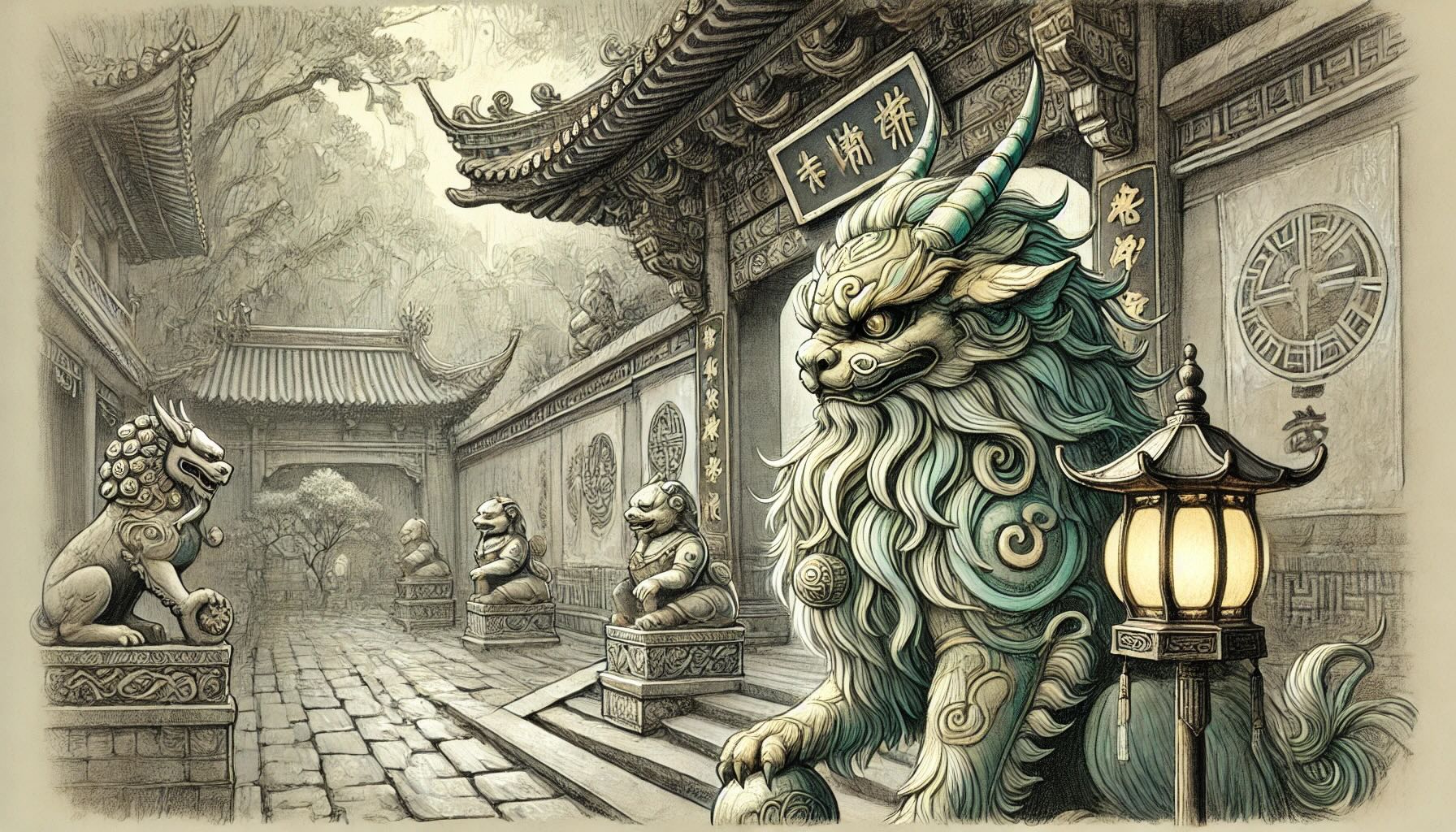The Aswang: Your Silent Predator in the Night
The darkness of the Philippine islands holds more than just the usual nocturnal creatures. The Aswang lurks there too—a shape-shifting terror whose presence is felt but rarely seen. If you wander too far from the safety of a village or travel under the cover of night, the Aswang might already be watching.
The Aswang is a predator of the night, hunting for its prey in secret. With its ability to blend into the darkness and adopt multiple forms, it is one of the most feared creatures in Filipino folklore. If you find yourself face-to-face with an Aswang, your survival depends on your knowledge and preparation.
Identification: Spotting the Aswang in the Wild
Aswangs are known for their shape-shifting abilities, often taking the form of a beautiful woman by day to blend in with local villagers. But under the cover of night, they transform into something far more sinister: a winged, monstrous creature, or sometimes a creature with a long, thin tongue capable of sucking blood or organs from its prey.
Here are key signs that you might be in the presence of an Aswang:
- Unusual Silence: If you feel an unnatural stillness around you—where even the usual night sounds of insects and animals go silent—be alert. The Aswang thrives in the stillness of the night, often causing the environment around it to fall eerily quiet.
- Shadowy Figures: Aswangs tend to stalk their prey in the shadows. If you notice a moving shadow where no shadow should exist, or if it seems to mimic your movements as you move, stay alert.
- Strange Flapping Sounds: A soft, irregular flapping sound in the air is a warning sign. The Aswang may be in its winged form, following you or preparing to strike.
Common Encounters: Who Is Most at Risk?
The Aswang is particularly active in rural areas, especially in remote villages where the natural world is wild and untamed. Those who travel alone or stray too far from safety are its prime targets.
Here are some common groups who’ve reported disturbing encounters:
-
Farmers and Villagers: Those who work the land in the evening often report a sense of being watched, followed by an unsettling feeling of being near something dangerous yet unseen.
-
Midwives and Healers: Women who travel by night to care for the sick or help with childbirth have long been warned about traveling alone. Many midwives have reported feeling stalked, hearing flapping wings or sensing a presence nearby, only to look and see nothing.
-
Hunters and Fishermen: Those who venture into the forests or out to sea may be the first to feel the brush of the Aswang’s deadly presence. Stories from hunters tell of unseen eyes watching them, followed by an inexplicable sensation of danger in the woods.
How the Aswang Hunts: Tracking Its Movements
Unlike other predators, the Aswang is patient and methodical. It doesn’t rush to kill but instead uses psychological tactics to induce fear in its prey, allowing the creature to grow closer.
Common Signs of Aswang Behavior:
- Approaching with Stealth: If you ever feel as though you’re being followed but can’t see anyone, it’s likely an Aswang stalking its prey from the shadows.
- Sensing a Sudden Drop in Temperature: The Aswang brings an unnatural chill, and if the air around you becomes cold and still, the creature could be nearby.
- Feeding Techniques: When an Aswang feeds, it often does so through its tongue, which can stretch long distances, or it may transform into a bat-like creature to suck blood. If you find bloodless animals or unexplained marks on human bodies, it’s often a sign of an Aswang’s feeding habits.
Surviving an Aswang Encounter: Field Guide for the Brave
If you find yourself in an Aswang’s territory, there are specific steps you must take to avoid falling prey to its grasp.
1. Remain Calm:
- Panic makes you an easy target. The Aswang is drawn to fear, so remaining calm and steady will help you avoid becoming its next victim.
2. Avoid Isolation:
- Travel in groups whenever possible. The Aswang is less likely to attack a group of people and prefers to stalk lone travelers.
3. Carry Garlic and Holy Objects:
- Garlic, especially when worn around the neck or placed near the home, is believed to repel the Aswang. Holy relics or talismans, such as a cross or holy water, can also provide protection.
4. Stay in Well-Lit Areas:
- Aswangs avoid well-lit areas, as they are night creatures. Stick to well-lit paths and avoid traveling through forests or dense foliage at night.
5. Never Let the Aswang Touch You:
- If you are face-to-face with an Aswang and feel its presence drawing closer, do not allow it to touch you. It is believed that the Aswang’s touch is deadly and will lead to possession or death.
6. If You Hear Flapping Wings:
- If you hear the sound of wings flapping in the air, do not run. Stay still and avoid drawing attention to yourself. In some accounts, making yourself appear larger by raising your arms or making loud noises can scare the creature off.
What to Do If You’re Attacked
In the event of an attack, you must act fast. The Aswang is fast, capable of attacking before you even realize it’s near.
- Defend Yourself: If you have a knife or another weapon, use it immediately. Striking at the Aswang’s eyes or wings is often your best chance of survival.
- Use Fire: Fire is believed to keep the Aswang at bay, so try to create a fire or carry a burning torch if you’re traveling at night.
Signs You’re in Aswang Territory
If you’re venturing through rural Philippine villages or isolated forests, here’s what to watch for:
- Silence: The usual sounds of animals and insects will suddenly stop, giving way to an eerie silence.
- Shifting Shadows: Be cautious of shadows that move unnaturally, or of figures that seem to be watching you from afar.
- Bloodless Livestock: If you find that livestock have been drained of blood or appear strangely sick, it may be a sign that an Aswang is feeding in the area.
Conclusion: Stay Safe, Stay Vigilant
The Aswang is not a creature to be taken lightly. Its presence is a threat, and it only hunts when the darkness is at its peak. By staying prepared, remaining vigilant, and respecting the signs of danger, you can increase your chances of surviving an encounter with this terrifying night predator.
But remember: the Aswang is always watching. Never let your guard down, especially when night falls, and always stay close to others when traveling in remote areas.



